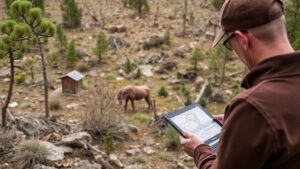How to Evaluate a Mining Concession for Profitability
How to Evaluate a Mining Concession for Profitability
Mining concessions represent significant investment opportunities, but their profitability is contingent upon a multitude of factors. This article outlines a structured approach to evaluating a mining concession, focusing on geological, technical, financial, and regulatory aspects. By understanding these elements, investors and stakeholders can make informed decisions about potential mining ventures.
Geological Evaluation
A comprehensive geological evaluation is foundational to assessing a mining concessions profitability. It starts by examining geologic maps, mineralization reports, and geological surveys to determine the presence and concentration of valuable minerals.
- Mineral Reserves: Understanding the type of mineral deposits (e.g., gold, copper, diamonds) and their estimated reserves is critical. For example, in 2020, Barrick Gold Corporation estimated proven and probable gold reserves of 68 million ounces in its Nevada mines.
- Grade of Ore: The ore grade, which refers to the concentration of valuable minerals in the ore, significantly impacts profitability. A higher-grade ore can yield better returns. If a gold concession has a grade of 5 grams per ton, it is often much more profitable than one with a grade of 1 gram per ton.
Technical Viability
Next, assessing the technical feasibility of extracting the resources is essential. This involves analyzing extraction methods and technology, as well as evaluating potential environmental implications.
- Mining Methods: The choice of mining method (e.g., open-pit vs. underground) will affect both costs and recovery rates. For example, the BHP Group applies open-pit mining to obtain copper in Chili, which allows larger quantities of ore to be processed effectively.
- Infrastructure: Access to infrastructure such as roads, power supply, and water resources can greatly impact operational efficiency and costs. In remote areas, inadequate infrastructure may inflate expenses beyond acceptable limits.
Financial Analysis
The financial viability of a mining concession should include an examination of capital and operating costs, market prices, and the potential for revenue generation.
- Cost Estimates: Creating an exhaustive budget for capital expenditures (CAPEX) and operational expenditures (OPEX) is crucial. For example, starting a mining operation can require investments of over $1 billion, depending on scale and technology.
- Market Dynamics: Prices of commodities fluctuate due to global supply and demand. A detailed analysis of market trends and price forecasts, such as the rise in lithium prices with the demand for electric batteries, can provide insights into potential profitability.
Regulatory Environment
The regulatory framework surrounding mining concessions can significantly affect profitability. Understanding local mining laws, environmental regulations, and labor relations is crucial.
- Permitting Processes: The time and cost associated with obtaining necessary permits can vary greatly. Countries like Canada have robust permitting processes, which may take years but lead to more sustainable practices.
- Community Relations: Engaging with local communities and securing social licenses to operate can enhance project viability. Successful mining operations, such as those by Newmont Corporation in Ghana, prioritize stakeholder engagement to build trust and ensure a smooth operational environment.
Case Study: Evaluation of a Mining Concession
To illustrate the evaluation process, consider a hypothetical concession for a silver mine. A potential investor would start by conducting geological surveys to ascertain the estimated silver reserves and ore grades in the area. Suppose the report indicates 10 million ounces at a grade of 15 grams per ton.
Next, the investor would evaluate the mining method, identifying that underground techniques are necessary given the depth of the ore body. required CAPEX to establish the mine is estimated at $500 million, with projected annual OPEX of $50 million. Current silver prices are $24 per ounce with forecasts predicting potential increases as demand rises for solar panels and electronics.
The investor would then analyze the permitting process and community engagement, finding that local regulations could require two years of permitting before operations can commence, impacting the overall timeline and potential revenue.
Conclusion and Actionable Takeaways
Evaluating a mining concession for profitability is multifaceted, requiring careful consideration of geological, technical, financial, and regulatory factors. The following takeaways can guide stakeholders in their evaluation process:
- Conduct thorough geological surveys to assess mineral reserves and ore grades.
- Analyze the technical feasibility of extraction and the associated infrastructure requirements.
- Perform a detailed financial analysis, including cost estimates and market dynamics.
- Understand the regulatory environment and the importance of community relations.
By integrating these components into the evaluation process, investors can better position themselves to make profitable decisions in the complex landscape of mining concessions.


